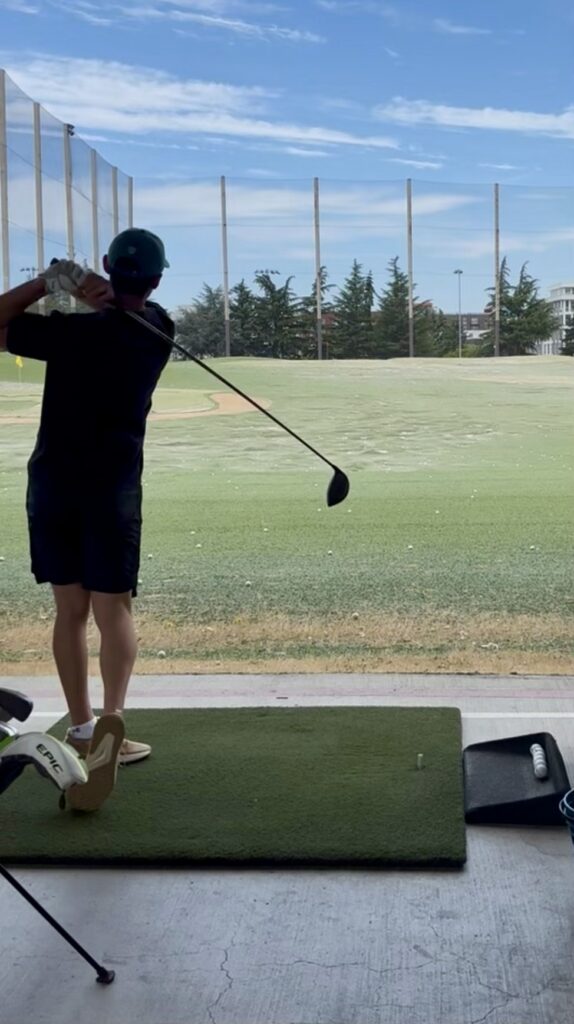Off-Season Golf Training: Physical Therapy Exercises to Improve Your Game

When the golf season winds down and the clubs go back into storage, it’s easy to lose momentum. But the off-season is actually the perfect time to work on the most important part of your golf game: your body. Incorporating physical therapy exercises during the off-season can help correct imbalances, build strength, and improve mobility-setting you up for a stronger, more consistent swing when the season returns
Below are four key physical therapy exercises designed specifically for golfers to enhance performance and prevent injuries during the off-season.
- Thoracic Spine Rotations
Why it matters: The ability to rotate through your thoracic spine (upper back) is essential for a powerful and fluid golf swing. Many beginner golfers lack mobility in this area, which can lead to compensations and injuries elsewhere, often in the low back or arms.
How to do it:
- Kneel on the ground with one leg up and one leg down
- Place your hands behind your head or on a dowel that’s over your shoulders
- Rotate your torso over the front leg as far as possible without moving your hips.
- Take a couple deep breaths at the end range and try to move farther into that end range.
- Return to center and rotate to the opposite side.
- Repeat 5 times each side.
Perform this exercise in front of a mirror to ensure your hips remain still.
- Hip Bridges with Band Resistance
Why it matters: Strong glutes and hips are critical for stability and power during the swing. Weakness here can lead to poor swing mechanics and back pain.
How to do it:
- Lie on your back with knees bent, feet flat on the ground, and a resistance band around your thighs.
- Press your knees slightly outward to engage the band.
- Lift your hips toward the ceiling, squeezing your glutes at the top.
- Lower down slowly.
- Repeat 3 sets of 12–15 reps.
- Progress this by holding weights on your hips or completing single leg (be sure to keep your hips level when completing single leg)
Avoid overarching your back—focus on lifting with your glutes, not your lower back.
- Single-Leg Balance with Reach
Why it matters: Golf is a single-leg dominant sport during the swing. Improving balance helps with weight transfer, swing control, and injury reduction.
How to do it:
- Stand on one leg, with a slight bend in the knee.
- Reach your opposite hand down toward the inside of your standing foot.
- Return to standing without losing balance.
- Do 2–3 sets of 10 reps per leg.
To make it harder, do this exercise on an unstable surface like a balance pad.
- Core Rotational Holds (Pallof Press)
Why it matters: A strong, stable core helps you control rotation and prevent excess strain on your spine.
How to do it:
- Attach a resistance band to a fixed point at chest height.
- Stand perpendicular to the anchor point and hold the band with both hands at your chest.
- Press the band straight out in front of you and hold for 10–15 seconds.
- Keep your body facing forward without rotating.
- Repeat 3 times per side.
- Progress by allowing your torso to rotate with you OR by standing on one leg
- Alternative option: Chops (pulling from high to low or low to high) with a hand weight or at a weighted cable station
Use your breath – exhale as you press and focus on engaging your core.
Final Thoughts: Consistency > Intensity
You don’t need to spend hours in the gym to benefit from off-season golf training. Just 20–30 minutes, 3-4 times a week can make a significant difference in your body’s mobility, strength, and control. These exercises are designed to complement your swing mechanics and prepare your body for more advanced strength or golf-specific drills down the line.
These are just the highlights on typical target areas for the average golfer but there are many swing faults and even more reasons for why those faults can be happening. Working with a PT who understands the biomechanics of the golf swing can help tailor your program to your unique needs-especially if you’re dealing with injuries, stiffness, or swing inconsistencies. You can schedule your assessment with me (Dr. Trevor Farm, PT) and we can create a tailored workout plan for you.
Treat the off-season as preparation, not a pause. By investing in your physical foundation now, you’ll be well on your way to better scores, fewer injuries, and a more powerful, consistent swing come spring.
